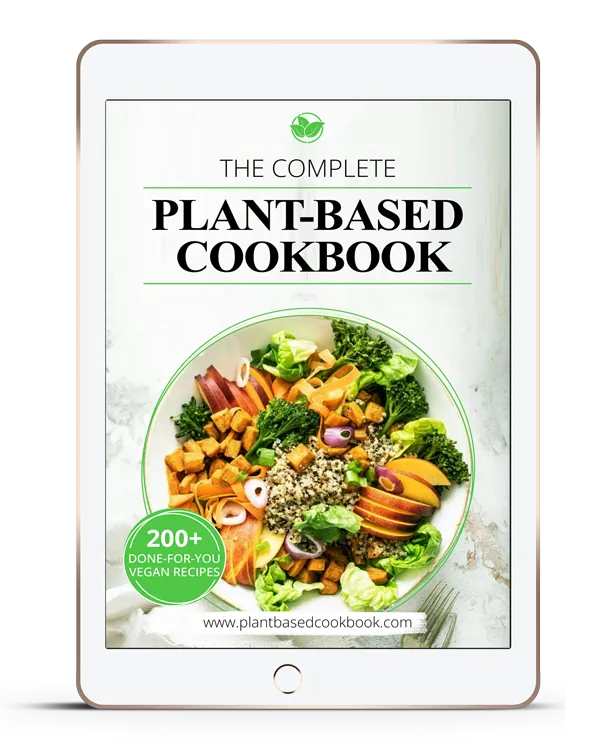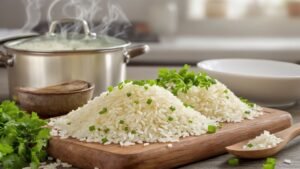Food is an essential part of our cultural identity. Traditional rice dishes are examples of how food is not just a means of sustenance, but also a reflection of our cultural heritage. Modern technology is, however, replacing conventional cooking methods as we transition to a modern lifestyle.
This article will explore the evolution of traditional rice dishes and how they are being adapted using modern cooking techniques. We will discuss how chefs are incorporating innovative ingredients and cooking methods to add a contemporary flair to traditional recipes while still respecting their cultural origins. We will also highlight the significance of preserving cultural heritage through food and the emergence of fusion cuisines.
Table of Contents
ToggleThe Evolution of Rice Dishes
The culinary history of rice dishes dates back to ancient civilizations such as China, India, and Japan. Over time, rice and its preparation have spread across continents and have become an integral part of many different cuisines.
The Significance of Rice
Rice plays an essential role in the diets of millions of people around the world. It is a versatile food that can be used in a wide variety of dishes, from soups and stews to sushi and paella.
Rice provides a source of carbohydrates, fiber, and essential nutrients such as iron and vitamin B.
What you may not be aware of though, is that rice is often a symbol of prosperity and good luck in many cultures, making it a significant element of cultural identity and tradition.
The Origins of Traditional Rice Dishes
Many traditional rice dishes have been passed down through generations, with recipes often reflecting the local ingredients and cooking methods of the time.
For instance, Spanish paella originated in Valencia and was created by farmers who cooked rice with chicken, rabbit, vegetables, and saffron in a dish over an open flame.
Similarly, Indian biryani was first prepared by the Mughal Empire and is made by layering rice with meat or vegetables and spices, then cooking it over a low flame.
While the ingredients and methods may differ, the common thread between traditional rice dishes is the importance of community and sharing.
These dishes were created to be shared at family gatherings, festivals, and other social celebrations, and they remain a vital part of cultural heritage.
Modern Technology in the Kitchen
The kitchen has seen a tremendous transformation over the years, and modern technology has played a pivotal role. Today, we have a range of kitchen appliances and tools that make cooking easier, efficient, and more enjoyable, particularly when it comes to preparing traditional rice dishes.

From rice cookers to pressure cookers, modern technology has revolutionized the way we cook rice and has made it easier to achieve consistent results.
One of the most important benefits of modern technology in the kitchen is the ability to save time.
Rice cookers, for instance, allow you to cook perfect rice without the need for constant monitoring or stirring. This frees up your time to focus on other parts of the meal preparation, reducing stress and making mealtime more enjoyable. Additionally, modern kitchen appliances have made cooking more accessible, which is particularly important for novice or inexperienced cooks who may be intimidated by traditional cooking methods.
Modern technology has also enhanced the flavors of traditional rice dishes. Pressure cookers and slow cookers are perfect examples of kitchen appliances that have been designed to preserve the natural flavor of rice while also cooking it in a timely and efficient manner. The ability to infuse rice with various herbs and spices using these appliances has opened up a whole new world of flavors for traditional rice dishes.
Furthermore, modern technology has the potential to reduce food waste by employing efficient cooking methods. Rice cookers, for instance, allow you to cook only the amount of rice you need, reducing leftovers and thus minimizing food waste. This is especially important in today’s world, where food waste is a growing concern.
Traditional Rice Dishes with a Twist
As chefs and home cooks look to modernize traditional rice dishes, many are incorporating innovative ingredients and cooking methods to add a contemporary flair to these classic recipes. From Asian-inspired fried rice with fresh vegetables to Spanish paella with a twist, modern rice dishes are reinventing culinary traditions.
Arroz con pollo, a traditional Latin American dish, is being elevated with the addition of saffron, chorizo, and more exotic spices. Similarly, Indian biryani is now being prepared with a variety of meats, seafood, and vegetables, giving it a unique and flavorful twist. These new takes on classic dishes allow traditional rice recipes to remain relevant and exciting.
Examples of creative rice dishes:
| Rice Dish | Country of Origin | Modern Twist |
|---|---|---|
| Bibimbap | South Korea | Incorporation of quinoa and other grains for added nutrition |
| Jambalaya | United States (Louisiana) | Inclusion of smoked sausage, chicken, and shrimp for added protein |
| Paella | Spain | Use of saffron and addition of unique seafood, such as squid ink rice |
The fusion of traditional cooking techniques and modern cooking methods has resulted in exciting new rice dishes that appeal to a wider range of taste preferences. By keeping the essence of traditional rice dishes intact while providing a contemporary twist, chefs and home cooks continue to expand on the cultural significance and variety of rice dishes around the world.
Benefits of Modern Technology in Rice Cooking
The use of modern technology has revolutionized the way traditional rice dishes are prepared and cooked. Here are some benefits of using modern technology in rice cooking:
- Time-saving: Modern rice cookers and pressure cookers can significantly reduce the amount of time needed to cook rice. With advanced features like programmable timers, rice can be cooked while you attend to other tasks.
- Consistent results: With the help of modern tools like rice cookers and induction cookers, rice can be cooked to perfection every time. These appliances can ensure that the rice is cooked evenly and avoid overcooking or burning.
- Enhanced flavors: Modern techniques like sous vide and molecular gastronomy can enhance the flavors of traditional rice dishes. By infusing rice with aromatic herbs or spices, chefs can create unique and interesting flavor combinations.
- Reducing food waste: Investing in a rice cooker that has settings for different types of rice can help reduce food waste. With the right cooking time and water ratio, rice can be cooked to perfection, reducing the need to discard any undercooked or overcooked rice.
Overall, modern technology has made rice cooking more efficient and convenient, while still preserving the authenticity and cultural heritage of traditional rice dishes.
Preserving Traditional Techniques
While modern technology has certainly revolutionized the way traditional rice dishes are prepared and cooked, it is important to note that preserving traditional techniques is still crucial. Many chefs and home cooks strive to maintain the essence of these dishes while incorporating innovative cooking methods.
One way to preserve traditional techniques is to use high-quality ingredients that are locally sourced and in-season. This not only supports local farmers and producers, but also ensures the authenticity of traditional dishes.
Another technique is to cook rice in the traditional manner, often using a stove-top method that requires patience and attention to detail. It is important to note that while rice cookers can be convenient, they do not always produce the same quality results as traditional cooking methods.
Furthermore, many chefs and home cooks aim to use traditional cooking tools, such as clay pots and wooden spoons, which can help to enhance the flavors of the dish. These tools have been used for centuries and can still be found in many kitchens today.
Ultimately, preserving traditional techniques when cooking rice dishes not only honors cultural heritage but also ensures the continued enjoyment of these dishes for generations to come.
Exploring Global Fusion Rice Cuisine
Modern cuisine is characterized by an exciting blend of flavors and techniques from different cultures. One of the most notable examples of culinary fusion is the increasing popularity of global fusion rice cuisine. This new style of cuisine combines traditional rice dishes with diverse flavors and ingredients from all over the world.
One such dish is the Mexican-inspired arroz con pollo, which is a traditional rice dish cooked with chicken, tomatoes, and spices. The fusion version includes ingredients like cumin, jalapenos, and cilantro, which provide a uniquely Mexican twist to the dish. Similarly, the popular Hawaiian poke bowl, which traditionally consists of raw fish and rice, has been updated with fusion ingredients like avocado, wasabi, and sesame seeds.
The Influence of Asian Cuisine
Asian cuisine has had a significant influence on the development of global fusion rice cuisine. Dishes like Thai fried rice or Japanese sushi rolls have become mainstream in many countries. The fusion versions of these dishes feature creative combinations of seasonings, proteins, and toppings that add a modern twist to the traditional recipes.
| Traditional Dish | Fusion Dish |
|---|---|
| Japanese Sushi Rolls with Seafood and Vegetables | Vietnamese-inspired Sushi Rolls with Grilled Pork and Fresh Herbs |
| Thai Pineapple Fried Rice with Shrimp and Cashews | Sriracha-infused Pineapple Fried Rice with Tofu and Peanuts |
The Diversity of Global Fusion Rice Cuisine
The range of global fusion rice cuisine is vast and diverse, reflecting the multicultural nature of modern cuisine. Recipes range from the spicy Indian biryani to the savory Cuban arroz con pollo, to the sweet Japanese mochi rice cakes. Fusion techniques may include adding unexpected ingredients such as coconut milk to a traditional Spanish paella or using a rice cooker to prepare a Chinese-style sticky rice dessert.
The beauty of global fusion rice cuisine lies in the creativity and innovation of the chefs who create them. These dishes honor the cultural heritage of traditional rice dishes while simultaneously embracing new and exciting flavors and techniques.
Modern Tools for Traditional Rice Dishes
The use of modern tools and culinary equipment has revolutionized the way traditional rice dishes are prepared. While some may argue that traditional cooking methods should be preserved, modern tools and equipment have distinct advantages that cannot be ignored.
One such advantage is the ability to control temperature and cooking time with precision. Electric rice cookers, for example, not only save time and effort, but they also produce consistent results every time. Moreover, they are equipped with features such as timers and automatic shut-offs, making them an excellent choice for busy households.
| Tool | Advantages |
|---|---|
| Electric Rice Cooker | Easy to use, consistent results, time-saving, automatic shut-off, versatile |
| Bamboo Steamer | Natural, eco-friendly, produces tender rice, enhances flavor, easy to clean |
| Cast Iron Pot | Durable, retains heat well, non-stick, enhances flavor, can be used on a stove or in an oven |
Another modern tool that has gained popularity in recent years is the bamboo steamer. Made of natural materials, these steamers are eco-friendly and produce tender rice that is full of flavor. Additionally, they are easy to clean and can be used to cook a variety of dishes.
Cast iron pots are another excellent choice for cooking traditional rice dishes. They are durable, retain heat well, and enhance the flavor of the rice. Cast iron pots can be used on a stove or in an oven, making them versatile and convenient to use.
When selecting tools for cooking traditional rice dishes, it is essential to choose quality equipment that will produce the desired results. While modern tools and equipment may not be traditional, they can help preserve the essence of traditional rice dishes while making the cooking process more efficient and enjoyable.
Traditional Rice Dishes in a Modern World
As our world becomes more interconnected, traditional rice dishes are facing new challenges and opportunities. In many cases, these dishes are being adapted to suit changing dietary preferences, cultural fusion, and the impact of globalization on traditional food cultures.
One of the most significant challenges facing traditional rice dishes is cultural adaptation. As people move away from their country of origin and adopt new dietary habits, traditional rice dishes are often adapted to suit local tastes. This can mean incorporating new ingredients, changing the cooking method, or altering the flavor profile. While this can result in new and exciting dishes, there is also the risk of losing the cultural heritage that these dishes represent.
Another challenge facing traditional rice dishes is the impact of globalization. As different cultures come into contact with one another, there is a greater emphasis on culinary fusion. This can result in the blending of traditional rice dishes with flavors and ingredients from other cultures, creating new and interesting dishes that reflect the multicultural nature of modern cuisine. However, there is also a risk of losing the authenticity and cultural significance of the original dish.
Despite these challenges, there are also many opportunities for traditional rice dishes in a modern world. Advances in technology and culinary innovation have allowed chefs and home cooks to preserve the essence of traditional rice dishes, while incorporating new and exciting cooking methods and ingredients. Additionally, there is a growing awareness and appreciation for traditional food cultures, which has led to increased interest and demand for authentic traditional rice dishes.
In order to ensure the continued success and relevance of traditional rice dishes in a modern world, it is important to strike a balance between tradition and innovation. By preserving the cultural heritage of these dishes while also embracing new culinary technologies and trends, we can continue to enjoy the flavors and stories that make them so special.
Culinary Innovations: Future of Traditional Rice Dishes
The future of traditional rice dishes is exciting, with many innovative culinary trends emerging. Technological advancements, coupled with cultural exchange and evolving consumer preferences, are shaping the future of these dishes in unique ways that still preserve their cultural heritage.
One trend that is gaining popularity is the use of alternative grains for rice dishes. Chefs are experimenting with ancient grains like quinoa, farro, and millet to create unique rice dishes with diverse flavors and textures.
| Alternative grains for rice dishes | Benefits |
|---|---|
| Quinoa | High in protein, fiber, and gluten-free |
| Farro | Nutty flavor, high in protein and fiber |
| Millet | Gluten-free, easy to digest |
Another trend is the use of local and seasonal ingredients to create traditional rice dishes. Chefs are sourcing fresh, in-season produce and incorporating them into traditional recipes, resulting in a fusion of traditional and modern flavors.
“I believe that by respecting and preserving traditional cooking methods and ingredients, while still adapting to new ideas and ingredients, we can create dishes that honor the past while embracing the future.” – Chef Lisa Kim
Technology is also playing a significant role in shaping the future of traditional rice dishes. Smart kitchen appliances, like rice cookers with wifi connectivity, allow for precise and efficient cooking, while also providing recipe suggestions and cooking tips.
Finally, the rise of global fusion cuisine is opening up new possibilities for traditional rice dishes. Chefs are blending flavors and ingredients from different cultures to create unique dishes that honor their culinary heritage while embracing the modern world.
- Examples of global fusion rice dishes:
- Paella with Asian spices
- Cajun jambalaya with Mediterranean ingredients
- Indian biryani made with Mexican rice
As the culinary world evolves, traditional rice dishes are experiencing a renaissance. By blending tradition and innovation, chefs are breathing new life into these dishes, while still preserving their cultural heritage.
Conclusion: Blending Tradition and Innovation
As we’ve explored in this article, the evolution of traditional rice dishes has been greatly influenced by modern technology and culinary innovations. However, despite the changes in cooking methods and ingredients, the cultural heritage of these recipes remains an integral part of modern cuisine.
Through fusion cuisine, chefs are introducing new flavors and techniques to traditional rice dishes, creating exciting new culinary experiences. The benefits of modern technology in rice cooking are clear, with time-saving, consistent results, and enhanced flavors. However, it’s important to remember the importance of preserving traditional techniques and cooking methods.
Traditional rice dishes have also adapted to suit changing dietary preferences, cultural fusion, and the impact of globalization on traditional food cultures. As we look to the future, the potential for culinary innovations and future trends in traditional rice dishes is exciting.
Ultimately, the key to success lies in blending tradition and innovation. By respecting the cultural heritage of traditional rice dishes while embracing new techniques and ingredients, chefs and home cooks can create delicious and memorable meals that celebrate the diversity of modern cuisine.
FAQ
Q: What are traditional rice dishes?
A: Traditional rice dishes are culinary creations that have been passed down through generations within various cultures. They often reflect the cultural heritage and regional flavors of a specific country or community.
Q: How are traditional rice dishes being adapted with modern technology?
A: With the emergence of modern cooking techniques and kitchen appliances, traditional rice dishes are being prepared and cooked in more efficient and innovative ways. Chefs are incorporating new ingredients and cooking methods to add a contemporary twist to these dishes while still respecting their cultural origins.
Q: What is fusion cuisine?
A: Fusion cuisine is a culinary style that blends elements from different cultures to create unique and innovative dishes. In the context of traditional rice dishes, fusion cuisine involves combining traditional recipes with flavors and ingredients from diverse cultures, resulting in a global fusion of tastes.
Q: What are the benefits of using modern technology in rice cooking?
A: Using modern technology in rice cooking offers benefits such as time-saving, consistent results, and enhanced flavors. Advanced kitchen appliances and cooking techniques enable more precise control over temperature and cooking times, resulting in perfectly cooked rice every time.
Q: How can traditional cooking techniques be preserved despite the use of modern technology?
A: While modern technology has revolutionized the way traditional rice dishes are prepared, it is important to preserve the essence of traditional cooking techniques. Chefs and home cooks can maintain the authenticity of these dishes by incorporating innovative cooking methods while staying true to their cultural origins.
Q: What is global fusion rice cuisine?
A: Global fusion rice cuisine refers to the combination of traditional rice dishes with flavors and ingredients from different cultures around the world. It showcases the multicultural nature of modern cuisine and creates unique fusion recipes that blend diverse flavors and cooking traditions.
Q: What are some modern tools used in preparing traditional rice dishes?
A: Modern tools and culinary equipment used in preparing traditional rice dishes include rice cookers, steamers, and high-quality kitchen utensils. These tools help ensure the desired texture and consistency of the rice, as well as efficient cooking methods.
Q: What are the challenges and opportunities for traditional rice dishes in a modern world?
A: Traditional rice dishes face challenges such as adapting to changing dietary preferences, cultural fusion, and the impact of globalization on traditional food cultures. However, these dishes also present opportunities for cultural adaptation, innovation, and the exploration of new flavors and techniques.
Q: What does the future hold for traditional rice dishes?
A: The future of traditional rice dishes lies in culinary innovations and evolving consumer preferences. Technology, cultural exchange, and changing food trends will shape the future of these dishes, while still preserving their cultural heritage and significance.
Q: How can tradition and innovation be blended in the realm of traditional rice dishes?
A: Blending tradition and innovation involves incorporating modern cooking techniques and ingredients while staying true to the cultural heritage and flavors of traditional rice dishes. It is about honoring the past while embracing the possibilities of the present and future in culinary creations.
Last update on 2025-08-21 / Affiliate links / Images from Amazon Product Advertising API






